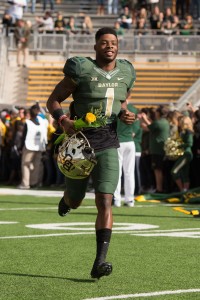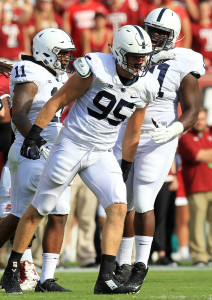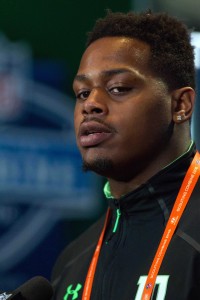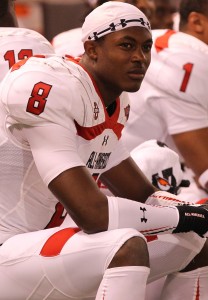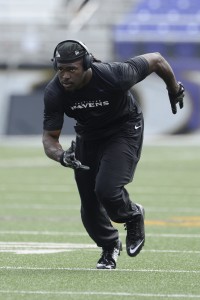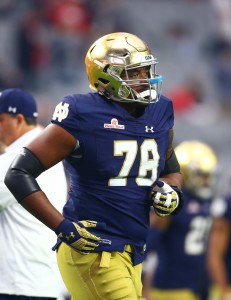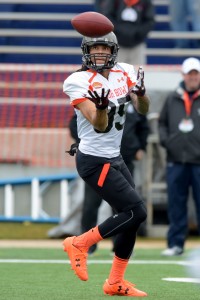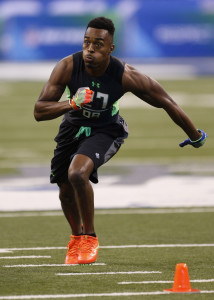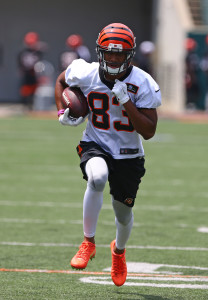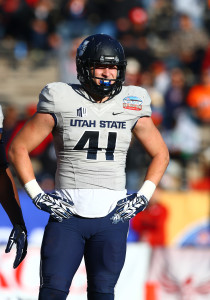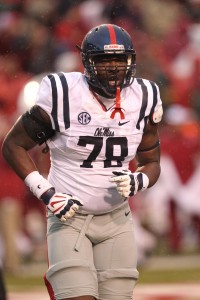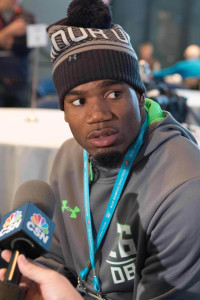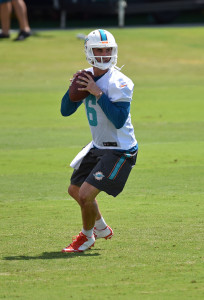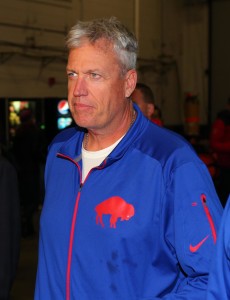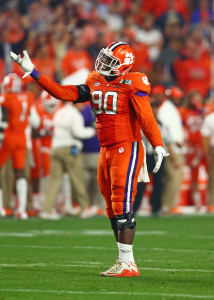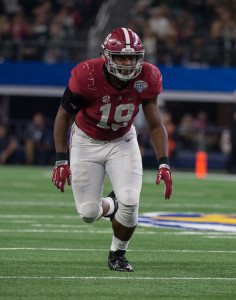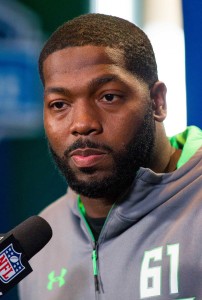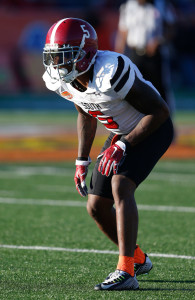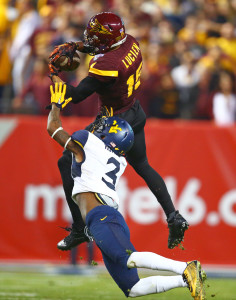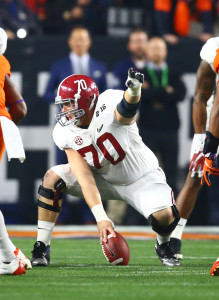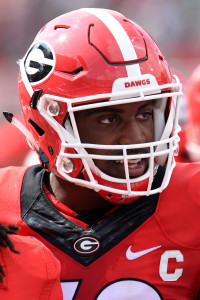The old adage that defense wins championships may or may not be true, but you’ll be hard-pressed to find a title-winning team that didn’t build heavily through the draft. Rookie classes, naturally, are evaluated on the perceived upside of the NFL newcomers, but which rookies are ready to contribute right out of the gate? And, how do they fit in with their new team schematically?
To help us forecast the immediate future of these NFL neophytes, we enlisted the help of draft guru Dave-Te Thomas who has served as a scouting personnel consultant to NFL teams for multiple decades.
Today, we continue PFR’s Impact Rookie series with his insight on the Denver Broncos’ draft class:
Even though Denver won the championship last season, you expect to see a great deal of changes for a team that relied heavily upon their defense to carry them into the playoffs. That unit, which ranked as the NFL’s leader in total defense (allowed 283.1 ypg) and pass defense (199.6 ypg) while ranking third against the run (83.6 ypg) lost two big contributors via free agency, including rush end Malik Jackson.
Speaking of the D-Line, the team made a strange move in the second round of the draft by taking Australian Adam Gotsis out of Georgia Tech. The Yellow Jacket’s technique failed to develop in college and he was viewed by most teams as just a strong man who can help support vs. the run, but also as a player with obvious pass rush deficiencies.
Gotsis, despite his power, was often stalled by combo blocks and reach blocks, rarely using his arms to escape from an offensive lineman’s clutches. He never really demonstrated much lateral agility and more often than not, he would lose sight of the ball carrier before the opponent hit the cut back lanes and showed marginal wrap-tackle skills. Gotsis has not played football since late October due to a torn ACL, making the selection even more puzzling.
Harder to replace is defensive tackle leader, inside linebacker Danny Trevathan (109 hits, two pass thefts, eight break-ups) who bolted for Chicago, where he is reunited with some of his former coaches from past Broncos seasons. Todd Davis is penciled in as his replacement, but he comes to the first unit with just 21 tackles and two career starting assignments. A former blue chip prospect whose off-field exploits resulted in a suspension while at Oklahoma, could rookie free agent Frank Shannon be the “wild card” to squash Davis’ first unit aspirations? It’s something to keep an eye on.
The offensive line was a constant problem and three of their Super Bowl starters – left tackle Ryan Harris, left guard Evan Mathis ,and right guard Luis Vasquez were jettisoned after the season. The team also traded away former left tackle starter Ryan Clady, bringing in Seattle’s Russell Okung to play the demanding position. Max Garcia, a 2015 fourth round find, takes over at left guard, but the team has a big question mark that they hope this year’s fifth round pick, Connor McGovern, could fill at the right guard position. Ouch!
I wasn’t thrilled with every pick the Broncos made this year, but these rookies could be contributors right off the bat:
Fourth Round – Devontae Booker, RB (Utah, No. 136 overall)
Ronnie Hillman led the team in rushing last year but he had to share time with C.J. Anderson, starting ten times against Anderson’s six starts. Hillman might be seeing the writing on the wall, as the front office determined that Anderson was worth a four-year deal. Still, neither player should rest easy with the training camp depth chart now that Booker is in the mix. Until he suffered a knee injury during the second half of the 2015 schedule, Booker was considered to be the best senior running back prospect in the draft. If he can return to form, the Broncos could have their most powerful runner since Terrell Davis suited up for the Orange Crush.
In two seasons at Utah, Booker earned All-Pac 12 accolades. He became just one of just two Utah players ever to record back-to-back 1,000-yard rushing seasons and one of three to rush for 1,000 yards twice in his career. He set the school record for career rushing average (120.6) and tied the school record for career 100-yard rushing games (14). He also finished third in career rushing yards (2,773), fourth in career carries (560) and tied for sixth in career rushing touchdowns (21).
A few weeks after earning Pac-12 Player of the Week honors for his performance against California (267 all-purpose yards), Booker was forced to miss the final two regular season games and bowl action when he suffered a torn meniscus and bone bruise in his left knee against Arizona. Their was hope that Booker would at least be able to participate in the Senior Bowl on January 30th, but he did not gain medical clearance and was also an observer at the NFL Scouting Combine and Utah’s March 24th Pro Day.
Booker runs with very good balance, body control and loose hips. He has a quick short area burst and good footwork, doing a nice job of shifting his weight and staying low in his pads to slip through traffic into the second level. He generates good body lean, moves and fakes to con the defender and is very effective using his outstanding change of direction agility. In isolated coverage, he will generally win the foot race vs. second level defenders. He has swivel hips, rather than veer and weave, doing a nice job of picking and sliding trying to find daylight.
Booker is the type that can generate an explosive and sudden burst into the crease, as he has that low center of gravity that remind old time scouts of former Jets tailback Freeman McNeil. He has outstanding vision and stop-and-go action to freeze the defender and is a slippery runner through the holes. He runs with great balance and flashes good quickness on the move. He might not be able to simply fly past an opponent, but he can quickly pick and slide through trash and is a fast-twitched type who has no problem negotiating through even the tiniest of creases.
Booker has excellent change of direction agility and body control. He is very effective when taking the pitch and having time to scan the field. He is the type that can create quite a bit on his own, but also is patient following his blocks. He does a very good job of adjusting on the move and with his shiftiness in and out of his cuts, he can get past the second level consistently. He has good lower body strength to break tackles and it is rare to see him go down on the initial hit.
Booker bounces outside with good urgency. He has superb outside vision and can get to his top-end speed to take the ball to the house turning the corner. He moves well as an option running back, also, where he is able to capitalize on his balance and foot work. He has a very good feel for the cutback lanes, getting the bulk of his yardage when doing so. He might not have the timed speed to beat secondary defenders, but takes good angles and shows the head and shoulder fakes to take those opponents out of the play. With his body control, he excels at turning it up with his outside run.
Booker shows good hands for the passing game. He is fluid when trying to extend his hands away from the framework, especially when attempting to get to off-target tosses. He shows good concentration to look the ball in and is quick to turn and head up field after the catch. He has the body control to adjust to the ball in flight and has a very good feel for getting open on the screens.
Continue reading about the Broncos’ rookie class..
